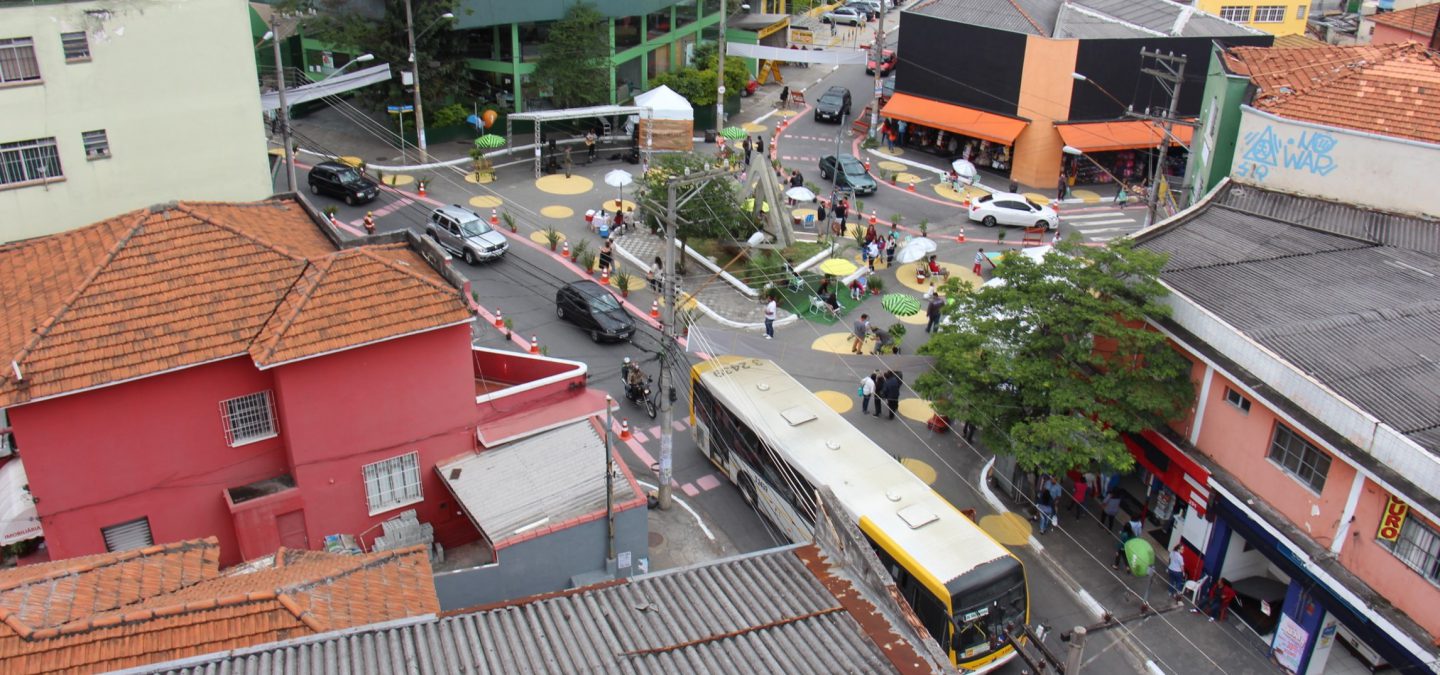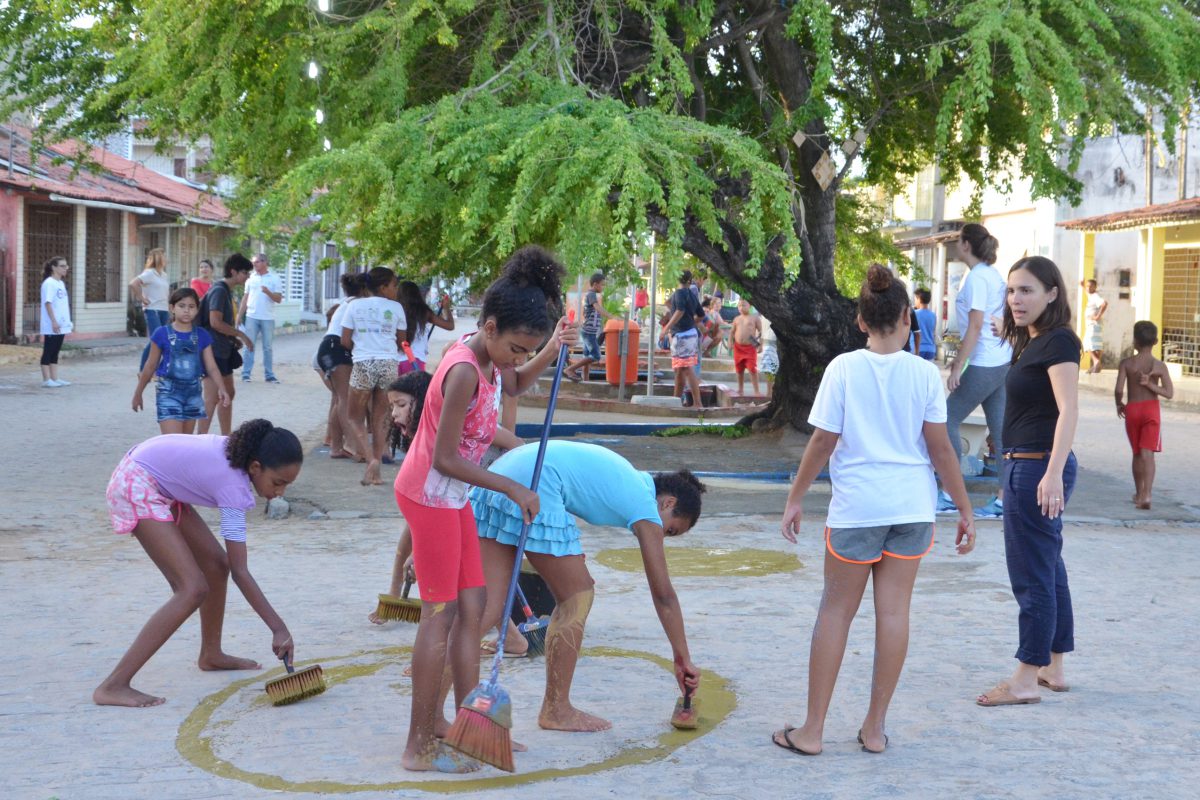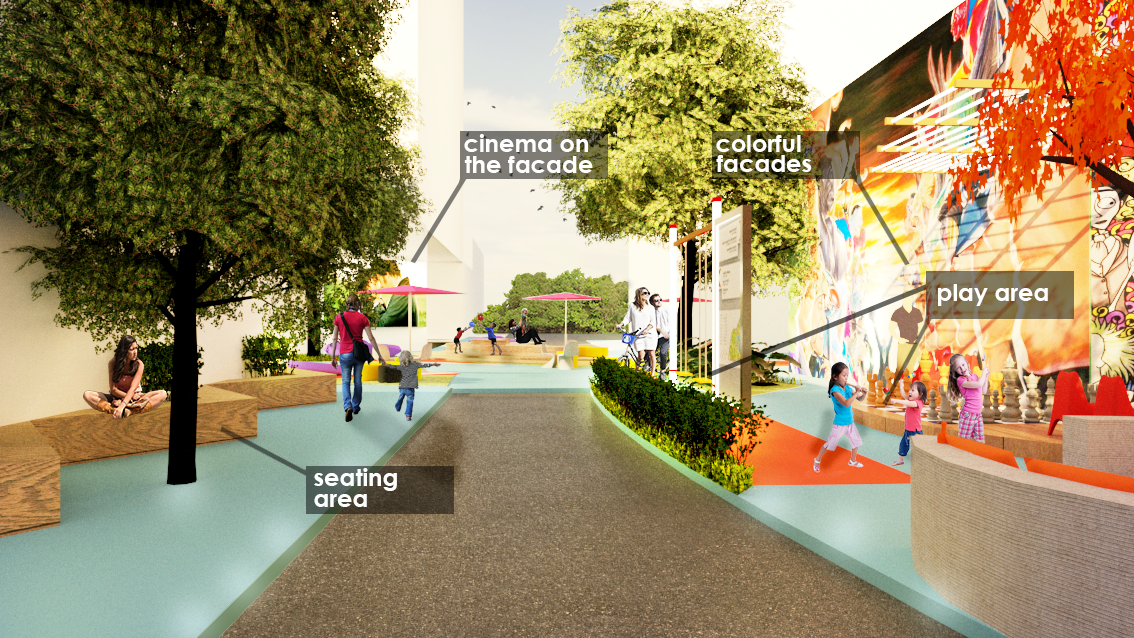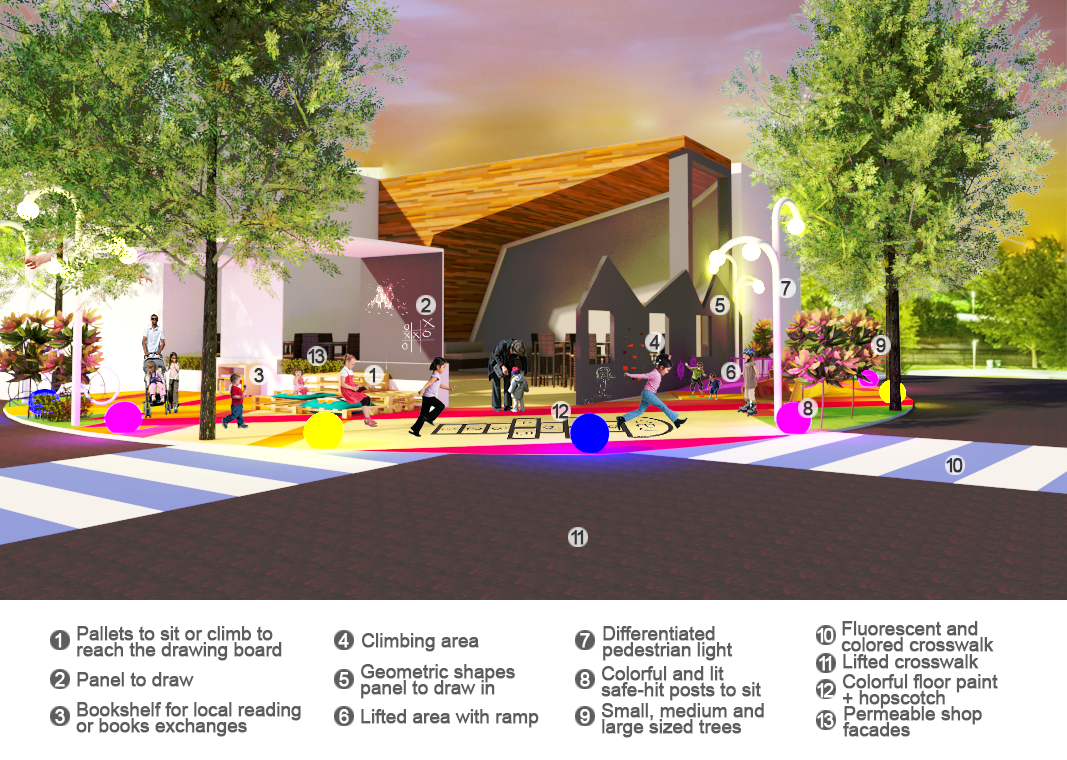
Keep up with our latest news and projects!

Seeing corners as a potential morphological element for tactical interventions provides another look at the public spaces, such as acknowledging corners as a quality space for children. Proposing guidelines for developing projects for attractive, safe and accessible corners can help in the interaction development between children and the community which they are part of.
The potentialities of corners can be explored through affective relationships with the city (Lynch, 2011) and the generation of safe spaces by the presence of people (Jacobs, 2014). There are three important points to consider:
– Corners are nodal points and indicate connections between paths that facilitate the concentration of people (Lynch, 2011).
– Corners offer a greater angle of view, which is a significant point for quality spaces development (Gehl, 2015), and the creation of a sense of defensible space (Newman, 1972).
– We can develop small-scale projects. Even a small group can give the feeling of a used space (Alexander, et al. 2013).
Jane Jacobs (2014) and Gehl (2015) argue that spaces with people are potentially safer, or, at least, provide a sense of security. Thus, corners have the following potentialities regarding children:
– They are highly used and concentrate people circulation. It becomes easier for parents to let their children play around the corner.
– They are also more visible places, hence with “eyes on the street” allowing not only the parents but also the neighbours to be attentive.
– Most of the streets have corners, which gives children easy access to nearby play spaces.
 Example of roads, Maragogí, Brazil
Example of roads, Maragogí, Brazil
The corners project for children proposes the transformation of the corners into places of permanence and that serve as learning spaces, contributing to the development of the neighbourhood and the city
as well. Security and experiencing the city are basic conditions while aspects of environmental psychology, such as textures, colours, sounds and smells are integrated. The following analysis steps are taken into consideration:
– Analysis of neighborhood children’s profile (the number of children that inhabit the space, their age, what they like to do, how
they are related to the city, how they usually walk through the neighbourhood);
– Spatial analysis of the neighborhood (sectorisation, size of the blocks, land use and occupation);
– Setting the number of projected corners in one area;
The project proposal aims to consider developing strategies to improve façades, roads and sidewalks that consider corners as part of the broader public realm:
 Corner example
Corner example
 Corners for kids
Corners for kids
Through these social interaction projects and the insertion of children in everyday public spaces, corners can contribute to facilitating the relationship between children and the city as well as their interaction with other people in the community, creating stronger social bonds since childhood. They can also encourage children to discover the world around them, reducing their fear about the streets, as it can help in the sense of location (creating memorable points that will help children to find their way), and provide safer connections between the streets, with smaller and easier crossings.
Good corner projects with good analysis and creative proposals for possible applications can transform our cities into more pleasant environments with corners that include and teach children through the urban environment. In this way, the corner is a morphological element of great potentiality for tactical interventions for children, a strong point to help in the resumption of public spaces for leisure.
This article belongs to a series of stories about the city at eye level for kids! You can access the full book online in PDF or pre-order your hardcopy to be delivered to your home.
Get your book here– Alexander, Christopher; Et al. (2013). A Pattern Language: Towns, Buildings, Construction. Porto Alegre, RS: Bookman.
– Gehl, Jan. (2015). Cities for People. 3th edition. São Paulo, SP: Perspectiva.
– Jacobs, Jane. (2014). The Death and Life of Great American Cities. 3th edition. São Paulo, SP: WMF Martins Fontes.
– Lynch, Kevin. (2011). The Image of the City. 3th edition. São Paulo, SP: WMF Martins Fontes.
– Newman, Oscar. (1972). Defensible space: crime prevention through urban design. New York, NY: The Macmillan Company.